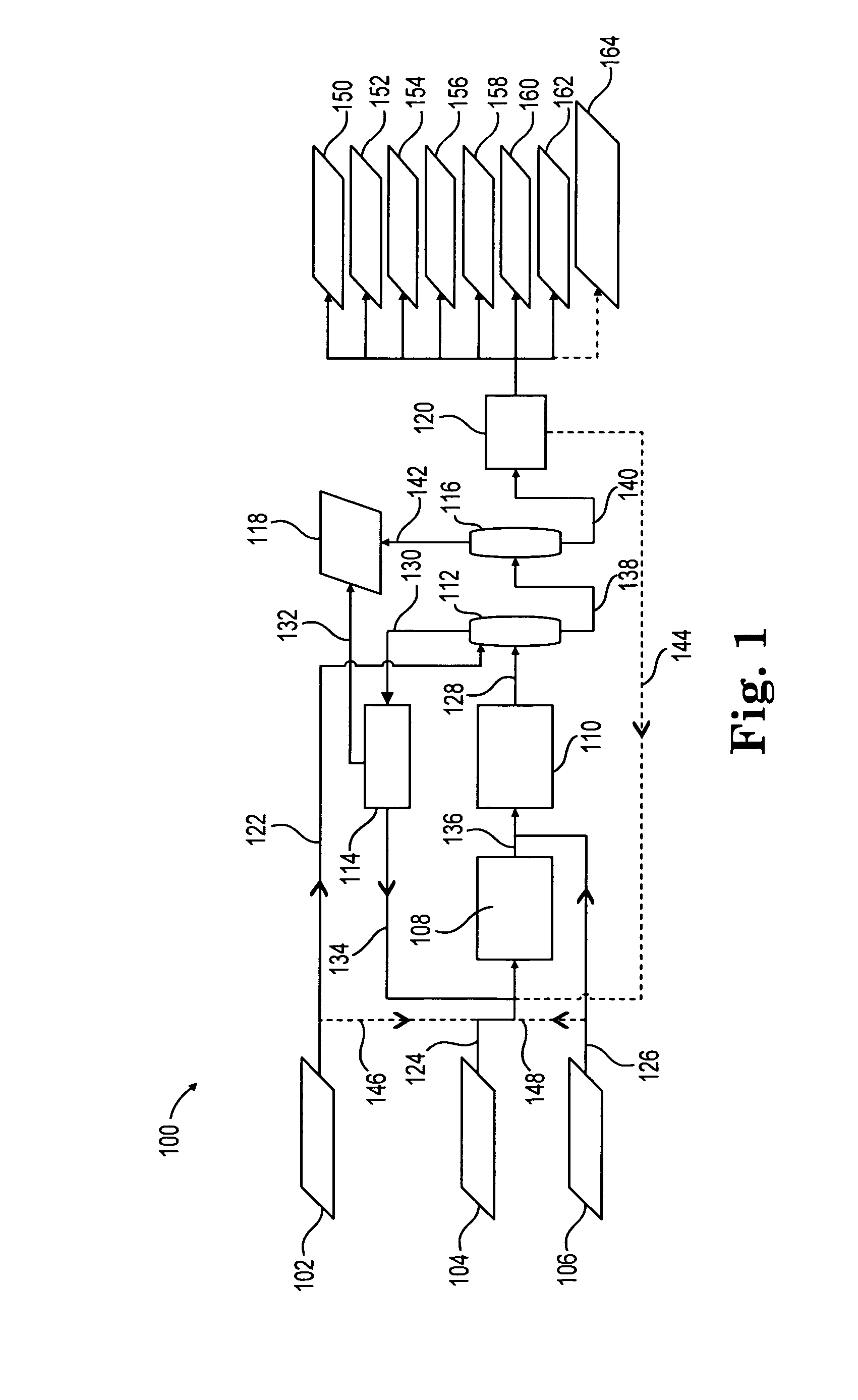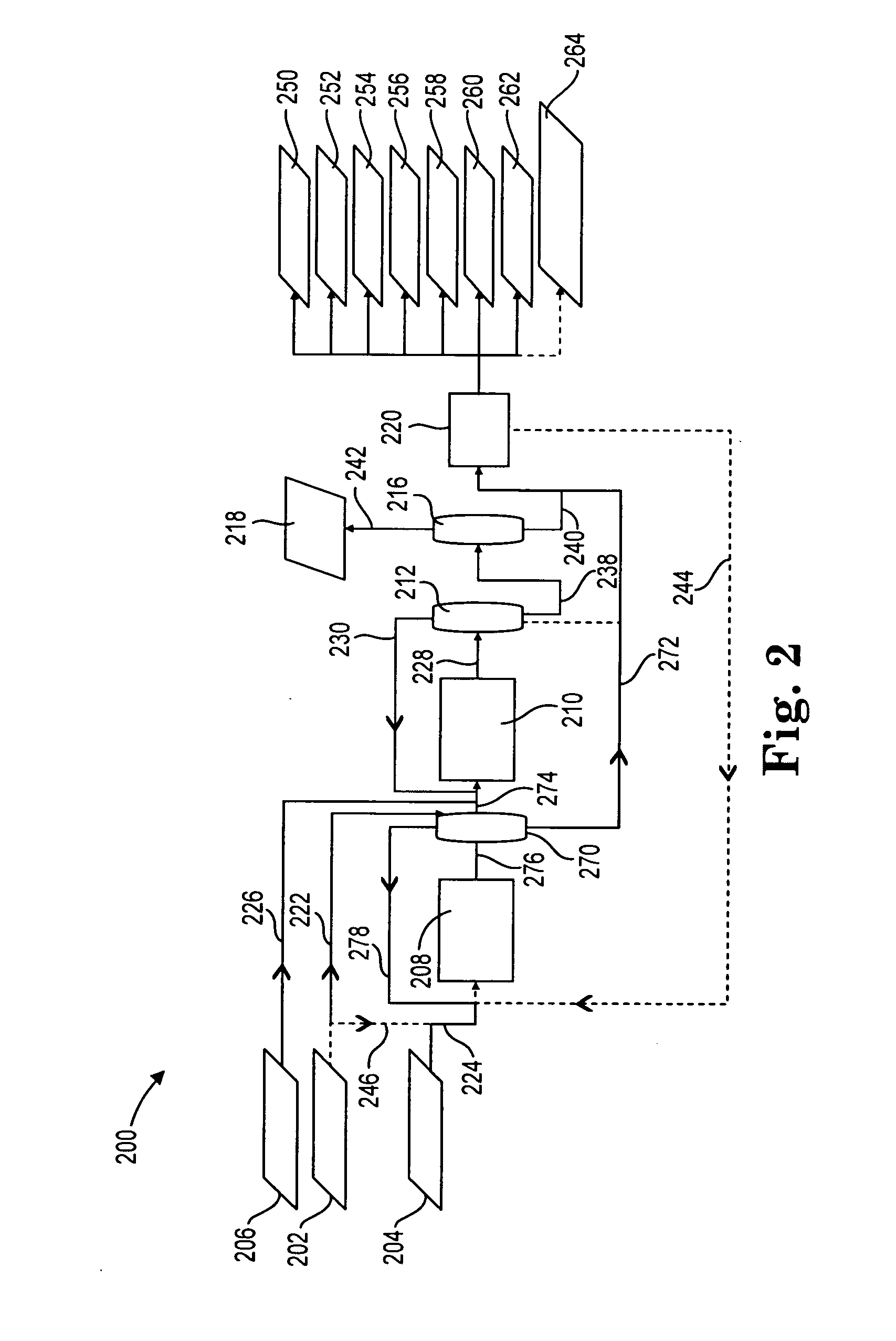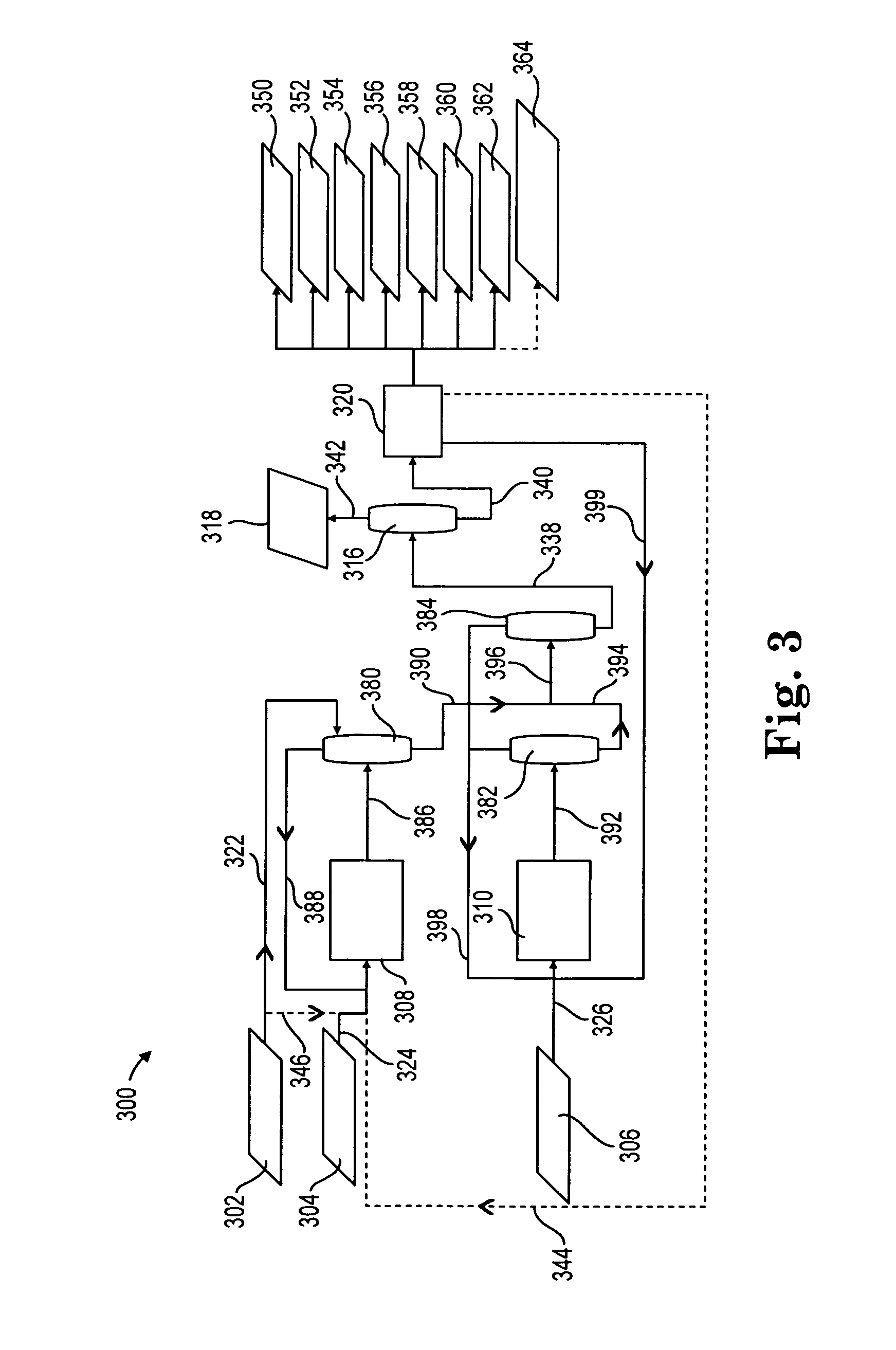Methods for making ethanolamine(s) and ethyleneamine(s) from ethylene oxide and ammonia, and related methods
a technology of which is applied in the field of making ethanolamine (s) and ethyleneamine (s) from ethylene oxide and ammonia, can solve the problems of undue degree, affecting one or more of product quality, product selectivity and process performance, and difficulty in separation of alkylethyleneamines from parent amines, so as to reduce the overall footprint of equipment, reduce capital investment and operating costs, and reduce the overall number of unit operations
- Summary
- Abstract
- Description
- Claims
- Application Information
AI Technical Summary
Benefits of technology
Problems solved by technology
Method used
Image
Examples
example 1
[0098]Example 1 shows the product mix from a reductive amination process where the effluent from the reaction between ethylene oxide and ammonia is fed to the reductive amination reactor. Such effluent includes MEA, DEA, TEA, and ammonia. Accordingly, Example 1 is indicative of the product mix coming out of the reductive amination reactor in FIG. 1, described above.
[0099]The reductive amination reaction in Example 1 was conducted over 125 grams of a Ni—Re—B catalyst prepared as described above. The feed consisted of liquid consisting of 17.9 wt % Water, 59.3 wt % Monoethanolamine, 17.1 wt % Diethanolamine, and 5.7 wt % Triethanolamine. Sufficient Ammonia to yield an Ammonia to Monoethanolamine mole ratio of 18.9 was added, along with 1.4 mol % Hydrogen (on a total feed basis). Reaction was conducted at a temperature of 165° C. and a pressure of 3018 psia, 924 grams per hour total feed. The reaction product was analyzed via capillary gas chromatography. Monoethanolamine conversion wa...
example 2
[0101]Example 2 shows the product mix from a reductive amination process where MEA and ammonia are fed to the reductive amination reactor. Accordingly, Example 2 is indicative of the product mix coming out of the reductive amination reactors in FIG. 2 or 3, described above.
[0102]The reductive amination reaction for Example 2 took place over a Nickel / Rhenium / Boron (8.0:2.0:1.7 wt. percent) catalyst on an alumina / silica (80:20) support prepared as described above. The catalyst was loaded into 86.25″ of 0.688″ ID tubular stainless steel adiabatic reactor. MEA and ammonia were fed into a mixer to provide an ammonia / MEA molar feed ratio of approximately 10. Hydrogen was also fed to yield a feed mix that was 1-2 mol % hydrogen. The mixture was fed to a reactor preheated to 165° C. at a pressure of 3000 psig and a space velocity of 10-12 g-mol MEA / kg catalyst / hour. The liquid sample was collected in a receiver at ambient temperature, to allow the ammonia and hydrogen to flash off. The prod...
example 3
[0103]Example 3 illustrates how alkylethylenediamines can be separated from ethylenediamine (EDA) via the azeotropic method explained above with respect to FIG. 4. A stream containing 0.115% by weight N-Ethylethylenediamine (EtEDA), 0.189% by weight N-Methylethylenediamine (MeEDA), 18.446% by weight ethylenediamine (EDA) 11.965% by weight Water and 69.285% of other ethanolamines and ethyleneamines (stream 402 in system 400) is fed to a water column (402). The water column contains 72 trays (numbered bottom to top with the bottom or lowest tray numbered 1) and the water column feed is introduced at tray 59. With the water column operating at head pressure of 23.7 psia, a head temperature of 115 C and a base temperature 176C, the composition of the overhead water make from a total condenser is 97.46% Water, 0.19% EtEDA 1.48% Me EDA and 0.16% EDA. At the conditions in the base of the water column, the bottoms stream 406 from the water column 404 will contain 1.5% water. Stream 406 is t...
PUM
| Property | Measurement | Unit |
|---|---|---|
| temperature | aaaaa | aaaaa |
| temperature | aaaaa | aaaaa |
| temperature | aaaaa | aaaaa |
Abstract
Description
Claims
Application Information
 Login to View More
Login to View More - R&D
- Intellectual Property
- Life Sciences
- Materials
- Tech Scout
- Unparalleled Data Quality
- Higher Quality Content
- 60% Fewer Hallucinations
Browse by: Latest US Patents, China's latest patents, Technical Efficacy Thesaurus, Application Domain, Technology Topic, Popular Technical Reports.
© 2025 PatSnap. All rights reserved.Legal|Privacy policy|Modern Slavery Act Transparency Statement|Sitemap|About US| Contact US: help@patsnap.com



